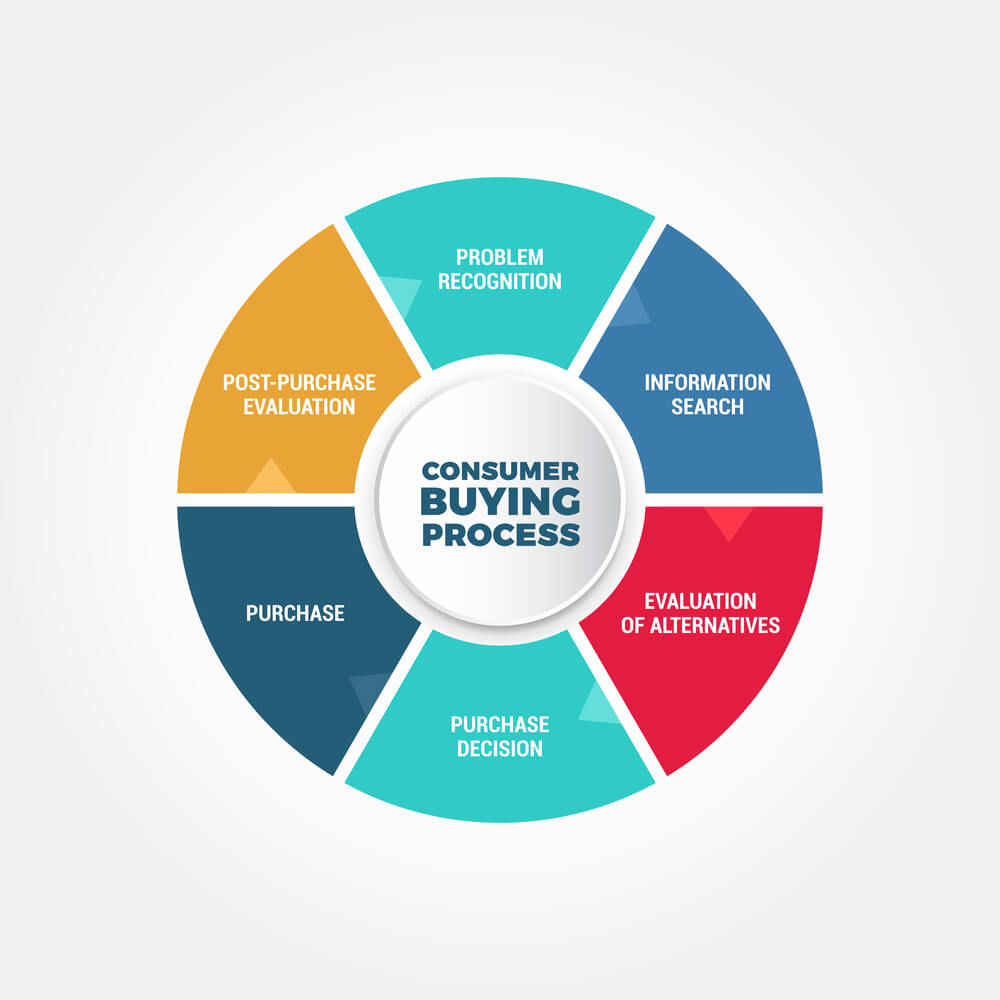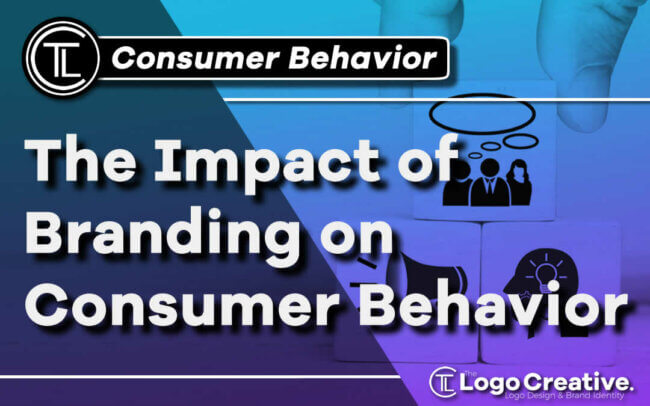Entering the market is easy, but being consistent with your performance is a difficult task – honestly, not everyone’s cup of tea. In this article we discuss The Impact of Branding on Consumer Behavior.
In this day and age, a company simply can’t survive without branding. It has become one of the fundamentals of marketing. Branding helps a company to convey their vision and connect with its potential customers.
A product may be produced in a factory, but the brand identity design is created in mind. Branding is a process that is a product of a collective effort of great marketing minds.
Every successful organization you see around you has capitalized on creating a brand identity because it deeply affects the consumer at every stage of the buying process.
Successful branding is a story being narrated to your customers across all consumer touchpoints.
Jeff Bezos, the CEO of Amazon says,
Table of Contents
‘Your brand is what people say about you when you’re not in the room.’
People are going to talk about your company, so it is necessary to give them a narrative; otherwise, they will give one to you, which may not reflect upon your brand identity.
You need to define your brand, translate the entire essence into a message, and then consistently communicate that message to your target audience with a defined tone.
Remember, consistency is the key, or else your efforts will go in vain. We may sound unethical, but the fact remains that stunning brand identity designs are very much capable of convincing people into buying a perception.
Branding has the power to shape perception!
Role Of Branding Throughout The Consumer Buying Process

First Stage – Need Recognition
The buying process starts when a person or an organization realizes that they have a need that needs to be fulfilled.
In other words, they identify a problem that they need to solve, so they will look up services that can help fill the gap.
Hook them while they’re at it…
At this point in time, a consumer does not know how to solve the problem and will probably start looking up for a solution. For example, you just lost your phone and are looking to buy a new one. You might not know what option is currently best for you, but you will have an idea of the options you have.
There are two ways the process may wind up:
- Either you will buy the same phone because you are satisfied
- Or you may look for other options available in the market
A company’s brand image plays a vital role here. It reflects upon the fact that how effectively have you been marketing your brand. A well-established brand image helps assist a consumer when he is looking for options.
A guy with no or less knowledge will prefer an iPhone over any Chinese brand, not because of its technical features, but entirely due to the image that is associated with it.
Brand image is a charm magnet that lures prospects buying into the brand.
As we have mentioned earlier, branding shapes perceptions; and if done consistently it can turn it into a reality.
Second Stage – Information Search
After the problem has been identified, a prospect will turn to the internet for possible options. At this stage of the buying process, a brand’s online presence will help them the most.
Branded content across all the digital platforms will make your brand shine, making it impossible to ignore its glory. Brands with established identities will always have an advantage over the ones who have just entered the market.
Older wine and brands will always have the advantage!
Personalized messages tailored specifically for your target audience will help your brand gain attention. As a marketer, you should always remember one thing: never sell a mattress, instead sell a good night’s sleep.
Honestly speaking, no one cares how good a product is; rather, everyone is interested in how that product will make them feel about themselves. Therefore, the brand message that you choose should convey the consumer’s point of view.
Brands that personalize their messages have a higher rate of making loyal customers. If people start believing that they share common traits with a particular brand, they will always keep it a priority.
Personalization is what makes customers stay loyal!
Branding is not a singular entity; it is a set of emotions, joyful experiences, kept promises, unbreakable bonds that make up the term.
Provide a customer with all these aspects, and you will never have to worry about your brand’s equity.
Branding will not earn you loyal customers on day one, but consistent branding will surely do one day!
Third Stage – Option Evaluation
By this time, a consumer discovers multiple options from which he can choose from. In this stage of the buying process, a consumer will further evaluate the options that are more suited to his needs.
The following are the most common aspects that a customer evaluates the products on:
- Is the brand trustworthy?
- Is the product in my budget?
- Is the quality of the product up to the mark?
- Is the after-sales service reliable?
If I were to replace all these aspects with a single term, I could simply say that customers are after a company with high brand equity.
Brand equity is a customer’s surety bond!
Brand equity is a silent promise of a company with its consumers that assures high quality and service at any point in time. Building trust is no easy task and requires consistent marketing efforts.
A successful brand identity design is the one that can boost a company’s brand equity. A brand manager needs to assure his target market that they will get nothing but the best if they buy into his brand.
The only way to make people believe in a brand is when a brand seems confident. Self-belief is the key here; brand communication needs to be full of sentiments of faith and reliance. Assure the consumer that you have got them covered at all times.
Make them believe in your brand!
Fourth Stage – Purchase Decision
Alas! The consumer has chosen the brand he is going to go with. Now, he is just looking at the easiest way to purchase the product.
A good branding strategy should reinforce the customer’s decision and should further assure him of the best possible experience through consistent marketing.
Your brand presence should be across every platform to ease the buying process for the buyer; otherwise, you may jeopardize a possible conversion.
During this phase, your brand communication should evoke:
- A sense of pride
- Emotions of self-expression
- Feelings of belonging
- A desire for prestige
The brand should paint itself as a larger-than-life platform that provides the epitome of user experience. The brand communication should promote the perks associated with their services; people are usually interested more in the added benefits of a product.
For example, people who buy iPhones are least bothered by the product innovation factor; they only buy an iPhone because of the experience and the prestige associated with the brand.
The best branding in the one that doesn’t look forced, the smoother your move, the better it will be.
Good branding is invisible to the eye and striking to the heart!
Fifth Stage – Post-Purchase Evaluation
You may have won the battle of securing a customer, but the war hasn’t been won yet. During this phase, the customer evaluates his decision to purchase a product.
Now the ball is in the customer’s court; he will decide whether his decision was right or wrong. Usually, customers evaluate on the following basis:
- Did the brand fulfill its promise?
- Is the quality of the product satisfactory?
- Evaluation of after-sales service
- Is the product worth the cost?
On the basis of these aspects, either they will be satisfied or experience buyer’s remorse. If satisfied, they will make another purchase and will act as brand ambassadors who will promote your brand for free.
On the contrary, if you are unable to satisfy the consumer, he will never return to your brand, and negative word of mouth will follow.
A brand manager should ensure the presence of communication, which reassures the customers of the purchase they’ve made.
A brand identity design should include a message which helps the brand to create a relationship with new customers.
You are already aware of the customer’s interest in your product, so it is necessary to add a strategy to reconnect with the consumer that will encourage him to buy again from the brand.
A brand is a promise of a quality experience that needs to be fulfilled at any cost!
Wrapping It Up
It is practically impossible to run a successful business without efficient branding. You can’t sell a product without associating the pleasure of experience with it. Brands sell because people love associating with personas.
A brand devoid of charm will not have loyal customers; people need an image with which they can link to. For creating a brand popular among the people, you will have to efficiently design a persona that can inspire them.
Branding that fails to inspire, expires!
Join The Logo Community
We hope you have enjoyed this article about The Impact of Branding on Consumer Behavior.
If you would like more personal tips, advice, insights, and access to our community threads and other goodies join me in our community.
You can comment directly on posts, access our community threads, have a discussion and ask questions with our founder Andrew.
If you’re looking to learn more about brand strategy, we highly recommend eRESONAID with our friend and acclaimed brand strategist and author Fabian Geyrhalter, it’s packed full of knowledge and insights you will need to learn to become a brand strategist or apply what you learn within your own business.
Author Bio
Saif Malik managers the digital content at Techxide, he’s a writer at heart who looks at every aspect of life as a story looking to be told.


